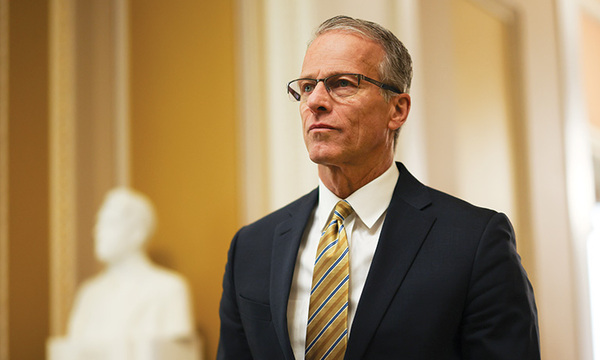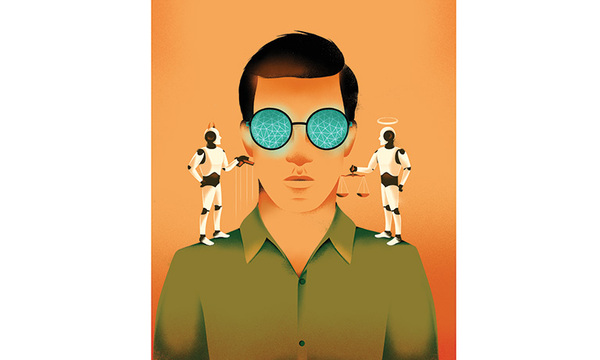Higher education is in the midst of an unprecedented shift, brought on by the relatively rapid rise of online learning. Last year alone, nearly one-third of college students nationwide took at least one online course — up from just 10 percent in 2002, according to the Babson Survey Research Group. In the same research, 70 percent of chief academic officers identified online education as “critical” to the long-term strategies of their universities.
But that doesn’t mean everyone is excited about it. Nearly 58 percent of faculty members nationwide report being more fearful than excited about the growth of online education, and a full two-thirds do not believe online offerings can match the quality of face-to-face courses, according to Babson. The emerging role of MOOCs (massive open online courses) — which in some cases enroll tens of thousands of students in a single course — are the subject of particular debate.
For its part, Biola has launched numerous online courses and programs in recent years (found at biola.edu/online). And in April, at an “Imagination Summit” for faculty members, President Barry H. Corey outlined a detailed, strategic vision for the role of online education moving forward (part of which is included in his President’s Perspective). In light of the ongoing trends, Biola Magazine recently decided to discuss online education with Freddy Cardoza, who directs Biola’s distributed learning strategies, and Joanne Jung, who regularly teaches biblical studies courses online.
Freddy, you recently helped to host an “Imagination Summit” at Biola, which involved getting nearly 200 professors together to talk about technology and education. What was the biggest takeaway for you?
CARDOZA: The biggest takeaway from the Imagination Summit was that technology usrs are either digital natives (meaning they’ve never known anything but a life inundated with technology) or they’re digital immigrants (meaning they’ve spent much of their lives without today’s immersive technology), but that both groups need one another to make Christian higher education all it can be. Specifically, early technology adopters can aid those who are slow to adopt technology by helping them see the benefits of digital learning, while later adopters of technology can aid early adopters by helping them understand the potential limitations and liabilities of digital learning — while also providing outstanding teaching that increasingly uses educational technology.
What excites you most about what Biola is doing and planning in the area of online education?
CARDOZA: There is a lot on the horizon that is very promising and equally exciting. I think that our desire to offer high-quality learning experiences in multiple formats (online and hybrid) [“hybrid” being a combination of online and in person], while providing both formal programs (full degrees) and non-formal opportunities (certificates and other quasi-academic learning options) is invigorating. Even more exciting, however, is that we hope to do these in a host of content areas unique to Biola’s “biblically integrative” approach, while uniting the forces of some cross-pollinated programs built from two or more of Biola’s six schools.
Joanne, you’ve taught a number of online courses. How have they differed from your traditional courses?
JUNG: I’ve been teaching “Biblical Interpretation and Spiritual Formation” as an online course for a number of years, typically during summer and Interterm. Lecture videos are embedded into the learning management system where students also submit their assignments electronically and respond to discussion prompts and other students’ posts within a small group. With the addition of videoconferencing, I am able to join in a conversation with each group, something that is far more limiting in a traditional classroom setting. When my class meets on campus, we have eight or nine groups, and I may have time in a 50-minute session to visit one or two groups and be present with them. With my online class, I can actually meet with each group.
What do you see as the biggest advantages to online education?
JUNG: Along with engaging with culture and extending Biola’s reach, one major advantage of online classes would be the way online education allows every student to be involved in a learning community. Students who are shy or prefer to take more time to process a response to a question are able to engage more effectively in an online format. I am always pleased with the level of engagement and the quality of responses I receive from students. This past semester I taught an online hybrid flipped class, where the students enjoyed the best of both worlds: the flexibility of engaging with rigorous course content outside the classroom walls and the personal engagement with the professor on a regular basis. The weekly times spent in the classroom — now shortened — were directed toward recent scholarship and learning activities based on material previously read, viewed or discussed online.
What do you see as the biggest drawbacks?
CARDOZA: The biggest drawbacks of online education may be that there are a handful of educational experiences that cannot be exactly replicated in an online environment — though many surprisingly can. One drawback might be that online learners are not “physically” in the immediate presence of our faculty and other learners here on this legacy-filled campus with all its palpable history. Another is that learners are not “living together” in a social community in quite the same way as a traditional campus student might be. And our substantial library and campus facilities offer some learning resources (e.g., certain print-only library books and specific educational equipment) that not every off-campus student can access. Even so, through social, digital and academic technology, we can approximate many of those learning resources that make online learning a better choice than traditional education for some of our students. Taking advantage of distributive learning options allows them the freedom to live, work and serve where God has planted them — and for many that is a great tradeoff!
JUNG: Drawbacks force us to think intentionally about how to approach the challenges of online learning. Successful online learning requires self-discipline, self-motivation and effective time management. Not all students make good online learners. There are some students who prefer taking classes in a traditional setting and they respond better in that environment.
For faculty, course preparation for an online class is particularly time consuming. Online classes are not simply information transfer. Embedding lecture videos, assigning readings, giving quizzes and collecting a final exam or paper at the end of a course with little or no interaction with students does not constitute an online course. Conveying the knowledge and passion for a subject in a way that students would want to learn more, seeking to create as much of a virtual presence as is healthy and productive, and thinking about how these impact character formation, require many hours of thoughtful and creative planning. This could be one reason why professors are reluctant to create an online course. With proper training and support, however, these challenges can become a rewarding experience for professors and students alike.
People in higher education have been buzzing about the rise of MOOCs over the past few years. (As one recent example, The New Yorker just wrote a massive 9,000-word piece about them.) How do you foresee them impacting higher education in the years ahead?
CARDOZA: MOOCs threaten some educators because they are built on an educational philosophy and methodology that is different than much of what higher education has historically been. Though I understand many of these concerns, MOOCs may represent an enormous opportunity for providing at least non-formal, if not formal, educational access to the masses in the years ahead. These courses tend to be collaborative and solution-based learning endeavors, and I think courses such as these can have great promise.
With Stanford, MIT, Harvard and others stepping into this space and investing into it heavily, we have an indication that MOOCs or something like them may be here to stay. Though I would not sell out to this approach as a panacea for higher education, I think that the better part of wisdom is that there is at least some place in our educational portfolio where MOOCs could play a role. To neglect staying on top of this development could have perilous effects to future educational and financial models of Christian higher education. So while we should be cautious, that caution should not cause us to avoid entering into the fray and miss out on what could be a revolutionary opportunity for the cause of Christ.
Infographic Data Source: Babson Survey Research Group, “Changing Course: Ten Years of Tracking Online Education in the United States,” 2013.Freddy Cardoza is Biola’s director of distributed learning and instructional technology, as well as the chair of the Christian education department. He holds a Ph.D. from The Southern Baptist Theological Seminary.
Joanne Jung (M.A. ’01) is an associate professor of biblical and theological studies at Biola, where she has taught numerous online courses. She holds a Ph.D. from Fuller Theological Seminary.
 Biola University
Biola University


